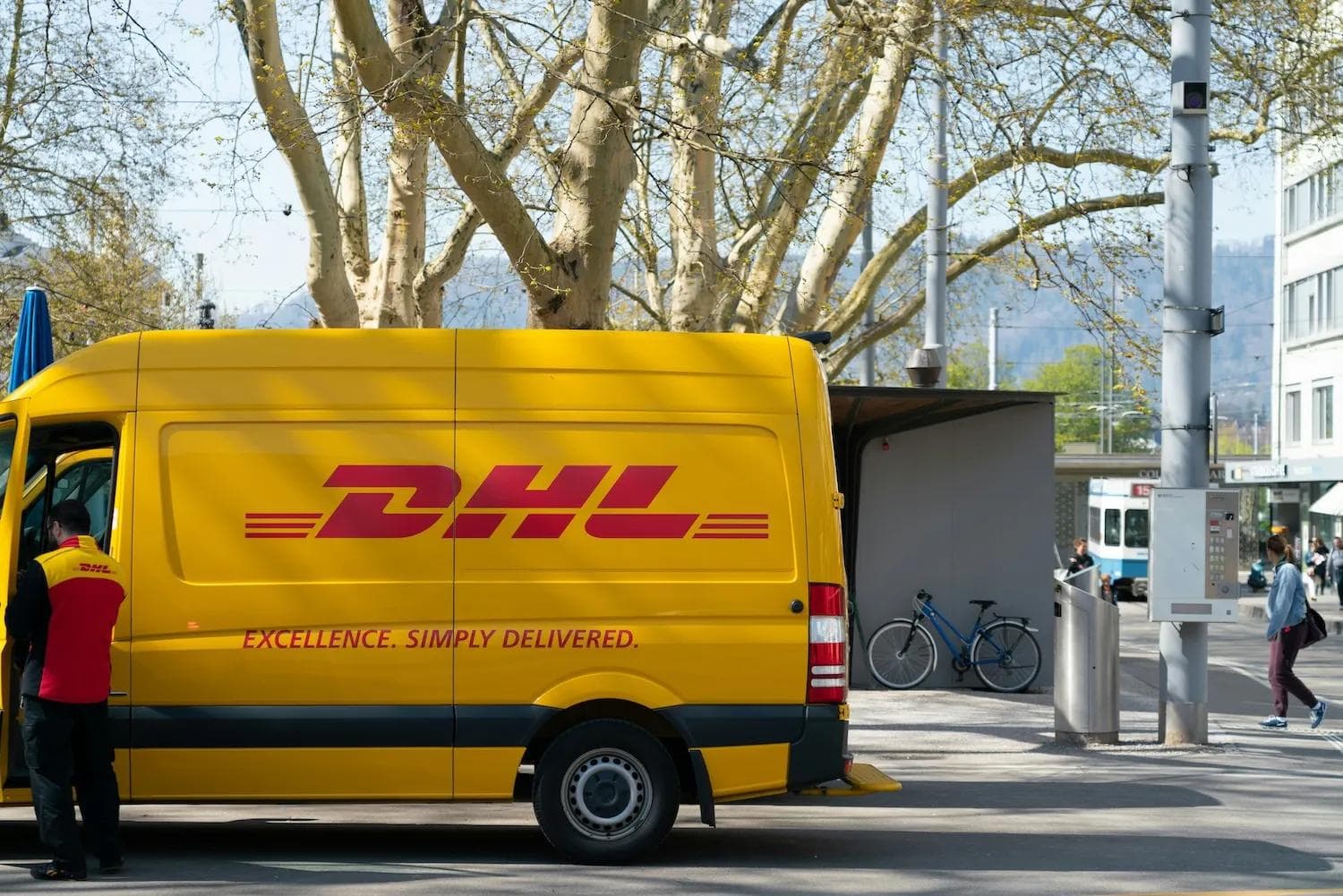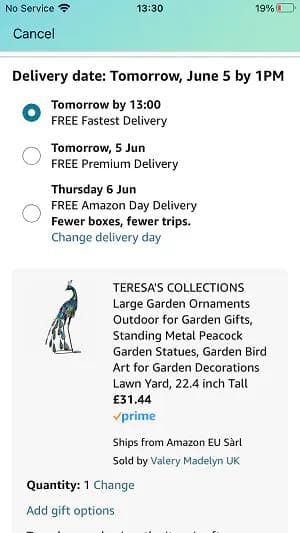The rise of convenience
According to YouGov data (2022), over half of Britons say they are motivated to shop online because there’s a larger selection and it’s less fuss to order at home. The comparability and speed of shopping are some of the other major attractions.
Overall less than half of Britons (48%) are willing to pay extra for next day delivery options however this figure does rise when purchasing certain types of products like electronic devices (64%) and health and beauty (62%) online.
Amazon has traditionally been a frontrunner in leading this demand for convenience and also next day and same day shipping options. It has opened 45 same-day shipping centres since 2019 and it could have as many as 150 operating within the next few years, according to MWPVL International, which tracks the retail and technology giant’s operations.
Amazon is far from alone in making investments to speed deliveries to customers in a more efficient and less costly manner.
Looking at our own clients that we manage we can see that while standard delivery remains the most popular choice at over 65% in most cases, next day is also rising, up to 24% however click and collect is also an option at 7%.
We know lots of retailers are looking into offering these services but is it really worth all the hype? Let's investigate.
So when we talk about next day and same day delivery, what is the difference?
With same-day delivery, customers who place their orders within a specific time frame get their orders processed, packaged and delivered within 24 hours, either by the business’ delivery transport system or a third-party delivery solutions provider.
Similar to the same-day delivery method, next-day deliveries require quick processing. And next-day deliveries require cut-off time specifications, similar to those of same-day deliveries. The difference is that next-day delivery orders are generally processed after businesses have closed for the day. In comparison to the same-day delivery process, this method leaves more room for the business to properly organise the orders they have received.

Is same day or next day delivery environmentally friendly?
As we’ve mentioned, anyone who has an Amazon Prime account will know the joy and convenience of being able to order items and have them turn up at your house the next day or in some cases even later on the same day. On the surface this seems quite environmentally friendly as we are not using petrol/energy in our own cars to drive to shops to pick up our purchases - but just how environmentally friendly is same day or next day delivery?
What is clear is that shopping online and selecting standard delivery is proven to be the best delivery option for the environment.
Vanarama carried out research to look at how green your parcel is and they found that home delivery is more than 24 times more eco-friendly than going on a shopping trip in your car.
Worryingly though half of consumers are still unaware that next day delivery is worse for the environment than standard delivery options. This is despite 94% of people saying that they care for the environment.
So what extra pressures does next day delivery or same delivery add?
Selecting this option often puts convenience above environmental concerns. Orders are fulfilled quickly and not consolidated in the same way so delivery vans are less full, therefore needing to make more journeys and increasing the overall emissions from the sector.
As well as the environmental concerns, the other key problem for retailers is that they are expensive and can yield further problems for the consumer down the line. Late, damaged, or failed deliveries, lack of communication, and deliveries arriving at inconvenient times can all lead to a bad customer experience.
Be prepared that any problems with the deliveries will directly go back to the retailer - regardless if it was an issue with a third party supplier that is out of the retailers control. So this needs to be managed and communicated to the customer really well.
The average cost of a failed delivery in the U.S. is about $17.2 and £11.6 in the UK (Statista). This can hugely impact margins, particularly in categories where the average order value is less than £200, such as apparel, accessories, automotive parts, office supplies, toys, and hobbies.

What’s more difficult to measure is the cost of a lost customer, which depends on how much each brand spends to attract a new shopper. We know most brands typically lose money on the first buy. So, gaining trust during the first delivery experience is critical to driving repeat sales and profitability.
Top tips for managing deliveries with customers
- Give an accurate date for delivery at the checkout so customers can plan for the delivery arriving.
- Real time order tracking will help customers track the delivery step by step.
- Brands should include an order confirmation notice in the customer journey with full delivery details to help customers spot any address or delivery errors quickly. Out-for-delivery notices are also critical.
- Give a range of delivery options at checkout - for example click and collect will allow customers to place orders online and pick up in store at a time they choose to be convenient.
Should consumers pick next day or same day delivery?
Freightwaves does an analysis of the 2 delivery systems and concludes that next day is the best option to select for the environment rather than same day. This is because with same day the order processing is so rapid that delivery logistics is not thought out in the same way so this leads to higher logistics costs. It is also through that same day deliveries contribute to higher levels of noise and air pollution.
Although next day delivery is slightly better for the environment than same day, consumers should only select this option if it is absolutely necessary - that is if you are truly serious about caring for the environment and the carbon footprint you leave.
Retailers should also be better at highlighting this to the consumer - the reasons why same day deliveries come at a premium is because they cost more and are less environmentally friendly. Amazon has also started doing this to their customers, offering them different delivery options and letting them know while delivery might take a day longer than normal it means the delivery van is making fewer trips.

The best and most environmentally friendly option is always standard delivery. It's also the cheapest. Ultimately the retailer needs to communicate all options clearly and efficiently to their consumers.
How to implement same day successfully
If you do decide that same day delivery is a must for your customers then here are our 5 top tips for implementing it successfully:
1. Assess resource and demand
Firstly you should speak to your customers to ensure this is a service that is wanted and suited to your business model. Once you have confirmed this, you need to ensure your own resources can deal with same day delivery. Specifically you will need to assess your delivery fleet (internal or external), your staff you have on hand to support the delivery drivers, your own tools you have in house and lastly your budget. If you do not already have this, investing in an inventory or warehouse management system makes huge sense.
2. Location and delivery zone
For same day delivery you need to have a delivery zone for the service as it's impossible to reach every corner of the country on same day delivery which is ultimately the main goal. Look at your customer data and pick somewhere that is close to customers but also to your fulfilment centres. For same-day delivery, a typical delivery zone has a radius of 5-10 miles (or 10-15 kilometres) from a pick-up location. 2.
3. Set a cut off time and delivery fee
Ensure you add a cut off time to your website that makes it clear if you order beyond a certain point then the same delivery option is not available. To do this you will need to assess the work hours of delivery drivers and order volumes (how many orders your drivers can fulfil and in what time frame).
The delivery fee is also important. How much you charge is ultimately up to you, obviously you need to cover costs and same day delivery is not cheap. As we have already said above - making customers aware that same day is premium for good reason and highlighting the environmental impacts is a good idea. With delivery fees you generally have 2 options: You can choose to absorb the cost yourselves or transfer them onto your customer base.
Work out the cost per order and cost per mile in order to best determine what route. Options for this include setting a flat fee or same day delivery, setting minimum order value or using a loyalty scheme like Amazon (Prime).
4. Add to your website
Speak to your platform provider and ensure you have all the necessary components to add this successfully. Connecting a good order management software or warehouse management software are key.
Also you will need to ensure the option is clearly visible at checkout and any cut off points are stated.
Test this before launching to ensure the process runs smoothly.
5. Evaluate and review
Once up and running, it's important to evaluate it and see how it's performing. There are lots of data metrics to look at but here are some key ones to observe: number of deliveries completed, on time deliveries completed, delivery cost, order value and what ratings/feedback have been given from customers.
